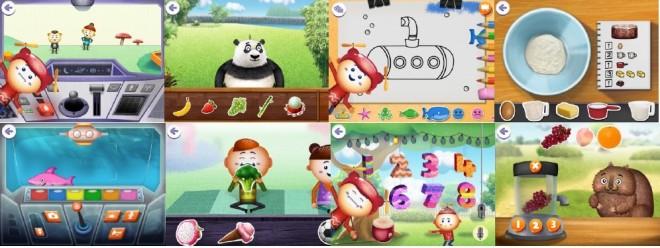
The Australian government has announced that it will be introducing a new curriculum for pre-schoolers that will let them learn new languages through a series of apps, and Hindi will be part of that roster of languages soon.
The programme, called Early Learning Languages Australia (ELLA), was piloted in the 2015-16, with five languages — Chinese (Mandarin), Japanese, Indonesian, French and Arabic — that would be taught to children through seven apps. A Deloitte report on the trial said the programme showed "positive results in increasing language exposure for preschool children."
Thus, it will now be rolled out to preschoolers across Australia, who can, in 2017, learn Italian and Spanish through the seven apps, besides the earlier five. Hindi and Modern Greek will be added to the list of languages for 2018.
The seven apps through which preschoolers will learn the languages are: The Polyglots in the Playroom, The Polyglots at the Beach, The Polyglots at the Birthday Party, The Polyglots at the Zoo, The Polyglots at the Circus, The Polyglots at the Park and The Polyglots in the Town. All these apps are currently available for download from Apple's App Store and Google's Play Store, and are supported on only these two platforms.
The country's government is reportedly spending $5.9 million for the 2017 rollout that would occur nationally. This is in addition to the $9.8 million it has already spent in the trial phase, wherein it reached as many as 10,000 students.
Minister bullish about programme
A PTI report quoted Australia's Minister for Education and Training Simon Birmingham as saying about the programme: "We know life-long learning begins from the youngest years and our $15.7 million investment in the languages app highlights the Turnbull governments commitment to reviving the study of languages throughout Australias early education centres, schools and universities."
Birmingham added: "We live in a globalised world and initiatives like the languages app are vital to supporting our children to take full advantage of the new opportunities our economic transition presents. It is particularly encouraging to see in what many describe as the Asian Century that almost two in three students are studying the vital languages Chinese and Japanese."









!['Had denied Housefull franchise as they wanted me to wear a bikini': Tia Bajpai on turning down bold scripts [Exclusive]](https://data1.ibtimes.co.in/en/full/806605/had-denied-housefull-franchise-they-wanted-me-wear-bikini-tia-bajpai-turning-down-bold.png?w=220&h=138)



